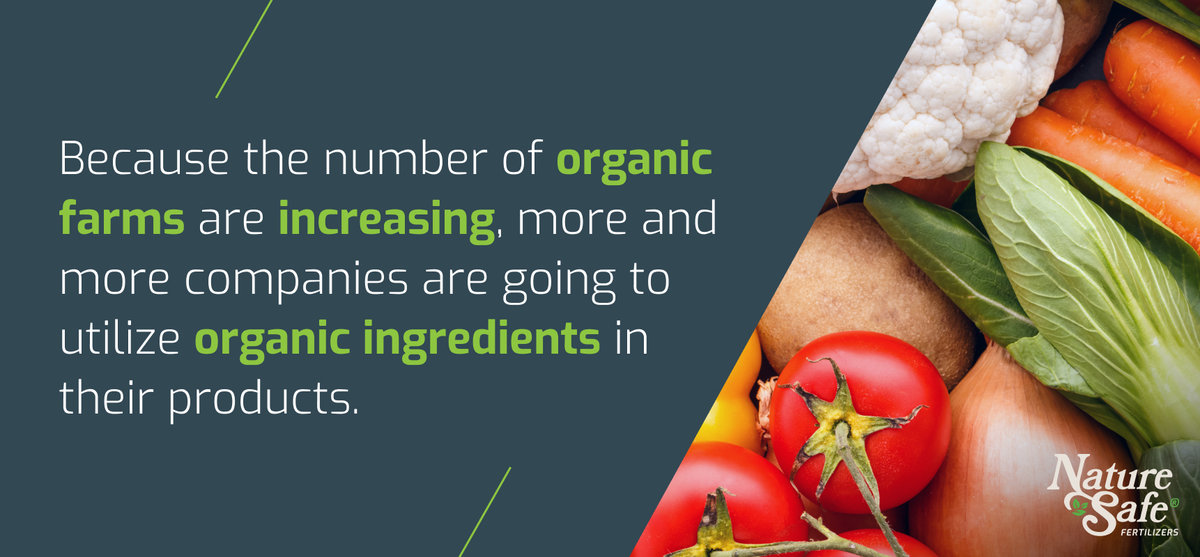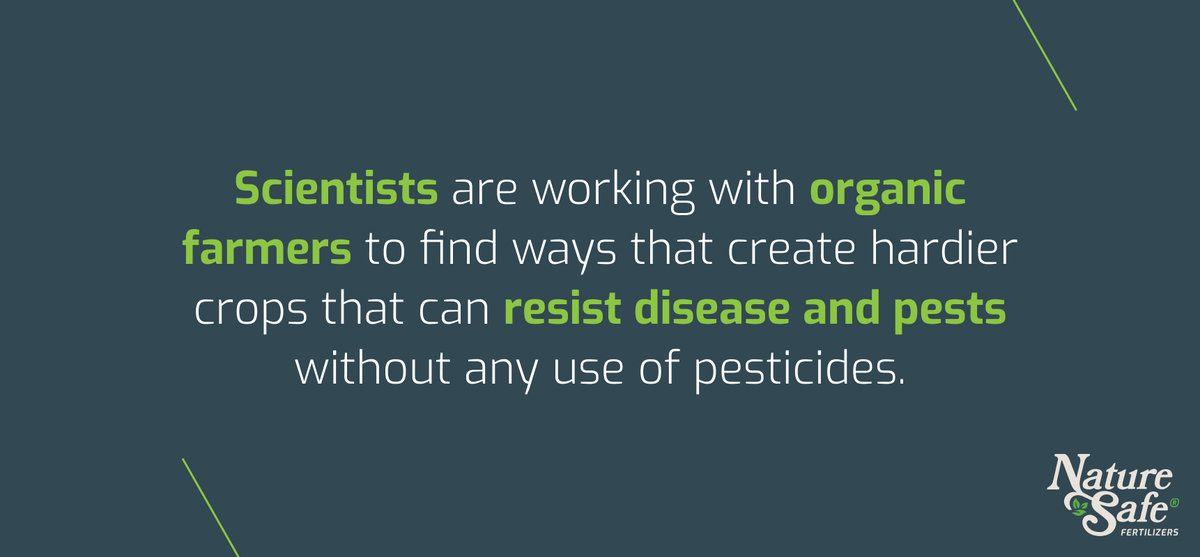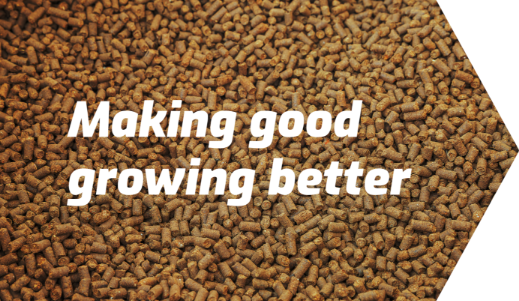
5 Ways Organic Farming is Evolving
What the New Decade Means for Agriculture
- Posted: Jun 09, 2022
- Author: Shaun Humphries
- Environment
To some, buying organic food is a no brainer. They head straight to that USDA-stamped section at the grocery store. For others, it might be a bit more of a learning curve. Afterall, the USDA has only placed standards and been certifying organic products since 2002. The organic farming movement has been around for decades, but the popularity and urgency of it are fairly recent.
Obviously, the perception of organic agriculture and many practices behind it have evolved over the years. There’s always room for change and growth. Farmers and scientists are beginning to figure out where the next decade will take organic farming.
Here are five ways organic farming is evolving in the 2020s.
1. More Companies Are Going Organic
Historically, organic agriculture produced crops and dairy products for organic food companies. All that brand sourced and produced was grown organically. Most people think of brands like Horizon Organic, Annie’s Homegrown, and Amy’s Kitchen. These products are often found in their own sections in grocery stores, and are staples in natural markets.
Recently, however, brands that haven’t been organic are releasing some items using organically grown ingredients. Campbell’s Soup Company owns Pepperidge Farms, the makers of Goldfish Crackers. In 2016, they released Goldfish made with organic wheat.
Initially, they had trouble sourcing enough wheat to meet demand, but they have since been able to, and the product has been a success.
Because the number of organic farms are increasing, more and more companies are going to utilize organic ingredients in their products. Food manufacturers are starting to understand the scope of benefits organic farming has to offer.

2. You’re Going to See More Product Variety
The most popular product of organic farms is produce. It’s been that way since organic agriculture has started to boom, and it’s likely to be that way going forward. Produce refers to just the raw fruits and vegetables that are harvested and sold straight to consumers at the grocery stores and farmers markets.
Produce is the most popular category of organic products, but things like crackers, cookies, bread, and even beauty products can be made with organic certified goods.
The 2020s are likely to see the scope of organic products grow dramatically. Not just more ‘conventional’ companies making more products with organic material, but more varieties of organic offerings.
The USDA shows that each category of organic products has grown in the last decade. Things that were previously nearly nonexistent now make a mark in the organic market. Nearly everything you use and consume has ingredients that had to be grown on a farm. The possibilities of organic products are endless, and food companies are beginning to recognize that.
3. Gene Editing and Selective Breeding are Increasing
Most people have probably already eaten organic foods that have been genetically modified. Seedless watermelons, anyone?
Genetically modified organisms, or GMOs, get a bad rap. It’s not always without reason. Companies that produce them usually have a track record of unethical practices and use of harsh chemicals that pollute the environment.
Organic farming is becoming increasingly popular. We’re getting better at it, and more farmers are developing more strategies to successfully transition from conventional farming. But that doesn’t mean it’s not without hardships. Regenerative practices can produce the same yields as conventional farms. Some farmers don’t have the time or resources to last through the transitional period. Currently, the USDA is helping transitioning producers help cover these costs. Growers have until October 31, 2022 to apply for this program.
Enter gene editing and selective breeding. Scientists are working with organic farmers to find ways that create hardier crops that can resist disease and pests without any use of pesticides. Selective breeding can do this as well, but it does take time.
Though not completely accepted by organic enthusiasts yet, these scientific practices might be the next evolutionary step for organic farming necessary to keep up with demands.

4. Local Will Be More Important Than Ever
While selectively breeding crops will slowly gain ground, local organic food will become more important than ever. Obviously some foods will need to travel (no one in the Midwest is getting local organic coffee), but many crops will do well in healthy soil and the right growing conditions.
Organic farming should be looked at with a more holistic lens. No one will argue that more access to organic food is a bad thing. But consider that transporting organic food uses a lot of fuel which pollutes the air and water, and can drive up prices. Emphasizing the importance of locally-grown produce and manufactured organic products helps the local economy. Some say that food grown in regions where it naturally does better makes it more nutritious and delicious.
5. More Farms will Embrace Regenerative Practices
Another trend in organic food and holistic approach to agriculture, regenerative organic practices are becoming more popular. Pioneered by the Rodale Institute, the goal of regenerative agriculture is not sustainability, but active improvement to the farmland and surrounding ecosystems. The USDA organic certification doesn’t account for regenerative practices, but Regenerative Organic Certified does.
The main principle of regenerative agriculture is soil health — utilization of cover crops, limited soil disturbance, rotational animal grazing, and always having crops planted in a field, promote soil health. With these practices, crop yields can match those of conventional farms.
While there are many resources for transitioning or starting a regenerative farm, the largest change-over is likely to come in the next decade as more people fully understand the dire situation of the climate.
Organic regenerative practices not only improve soil health on the farm, but if utilized globally, can make a massive impact in the fight against climate change.

“Keeping Up” as an Organic Farmer: Never Stop Growing
The evolution of organic farming only happens because the demand for it continues to grow. The Organic Trade Association reported that organic foods sales went up 12.4% in 2020, hitting over $54 billion. 82% of households in the US reported buying organic food. That number is only going to grow in the coming years.
Farmers looking to participate in the increasingly profitable organic market are in good company. Nature Safe Fertilizers understands that the way we approach farming is changing, and the use of synthetic inputs is on its way out.
Depending on your goals and needs for your organic farm, Nature Safe has a wide variety of high nitrogen organic and fortified fertilizers that will help you participate in the organic revolution—however you choose to do so. Call us at 800-743-7413.
